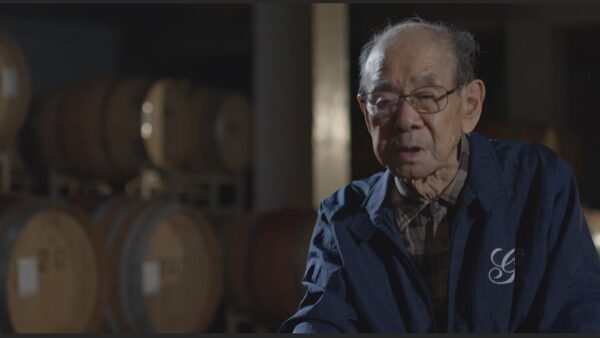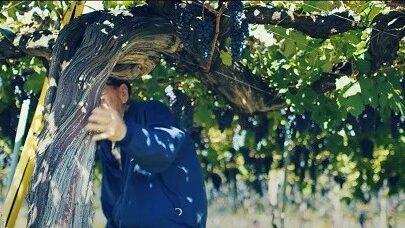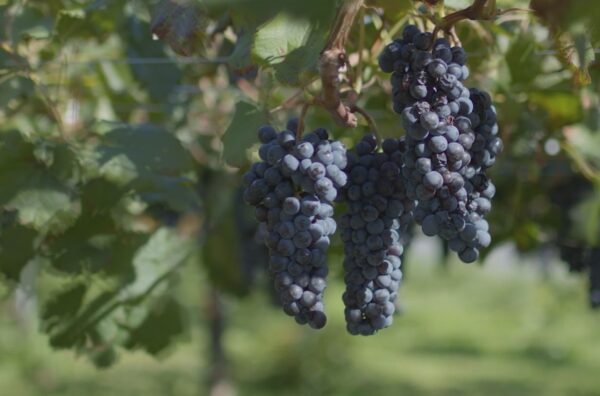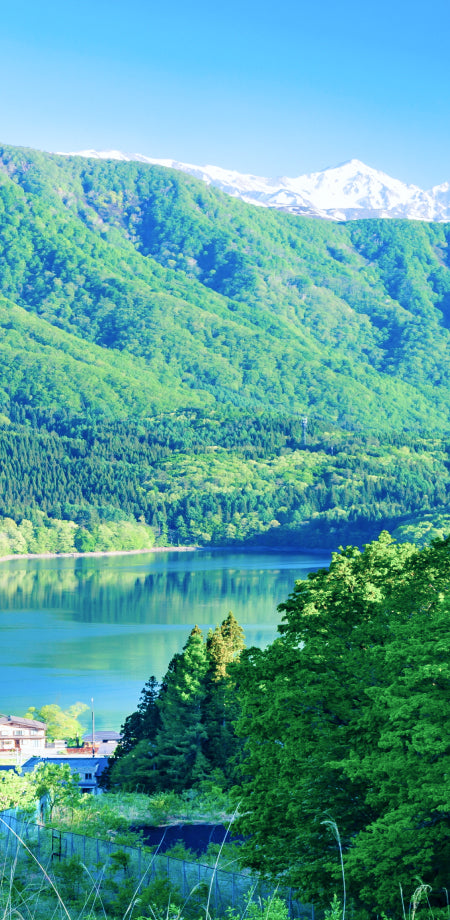投稿日:
更新日:
vol.1 [Kikyogahara Wine Volleyball] Hayashi Farm (Goichiwain) Hayashi Mikio
Kikyogahara Wine Valley
Hayashi Mikio, Chairman of Hayashi Farm (Goichiwain)
Located at the southern tip of the Matsumoto Basin, Nagano Kikyogahara is known as the oldest wine producer in the prefecture. The history of wine grape cultivation in this area dates back to the Meiji period.
Kikyogahara was considered a barren land with soil that had accumulated volcanic ash from Mt. Ontake and Mt. Norikura, but as the silk production expanded in the Meiji period, as demand for sericulture, which is used as a raw material, increased, it became cleared by settlers from the Suwa area and other areas. In addition to its main focus on sericulture, some farmers also focused on growing raw American grapes such as Niagara and Concord, and in 1902 Nagano It is said that the prefecture's first wine was produced.

In 1911, Hayashi Goichi, the founder of Hayashi Farm (Goichiwain), also settled in Kikyogahara. In 1919, we began brewing our own wines.
"American grape cultivation was the mainstream in Kikyogahara at the time, but I thought that European varieties could produce better wines, as Cabernet Sauvignon, Pinot Noir and Merlot are said to be the three major varieties of red wine. However, experts have always said that in addition to strong acidic soil, European wine grapes do not grow in Shiojiri, where winter cold is severe," says Hayashi Mikio, chairman of Hayashi Farm (Goichiwain).

Hayashi Mikio, Chairman of the Board of Directors of Hayashi Farm (Goichiwain)
However, he has a strong desire to produce even one type of wine that is well-known in the world at Hayashi Farm, and has experimentally grown about 10 types of European wine grape varieties. It is difficult to survive the winter, which drops to nearly minus 15 degrees, and as the results are not as good as you would expect, when you visit wine production areas all over Japan, you come across the European variety "Merlot" in Akayu Town (now Nanyo City) in Yamagata Prefecture. He witnessed the sight of European varieties being grown even in cold regions, and with the hope that they could grow in Shiojiri, he decided to graft several of the saplings he had given to his own farm. It was in 1952.

Old Merlot tree still bears grapes 70 years later
It was a series of hard work until Merlot took root. During the development, we found that Merlot is not simply sensitive to cold, but that the epidermis weakens due to cold, causing bacteria to infect trees and kills trees due to "tugs." After thinking and error, he came up with a method of grafting a rootstock that is immune to this bacteria, and this was a great success. We are working to establish cultivation methods and spread the use of merlot cultivation within the region. However, this was the time when sweet wine, represented by Akadama Port wine, was the mainstream. Domestic winemakers were looking for Concord, which is the raw material for sweet wine, and it was difficult to spread the word when importing European grape varieties of wine, when they could get cheaper and better products.
Times have changed, and the influence of Westernization of food culture and the liberalization of imports of foreign wines has led to a demand for authentic wines, with table wines exceeding the consumption of sweet wines in 1975. At the time, major manufacturers such as Daikoku Wine (now Mercian) and Suntory, which had 500 to 600 Concord farmers in Kikyogahara, were also stumped by the decline of sweet fruit liquor.
One day, both the production area and the manufacturer were exploring the next development, Asai Shogo, the factory manager of Daikoku wine at the time, visits Hayashi to discuss how to grow European varieties to replace Concord. Hayashi, who has been trying and error in cultivating merlot in this area for nearly 20 years, replied, "If it's Kikyogahara, if it's a European variety, then Merlot is the only thing. After that, Daikoku Wine quickly promoted the production of Merlot, distributing 6,000 bottles of Merlot to farmers under its umbrella for free. In 1976, full-scale merlot cultivation began in Kikyogahara, and entered a new stage.

"If it was your first attempt, it would be common practice to experimentally cultivate and gradually increase the number of cultivation, but I'm sure it was a situation where it was impossible to say such leisurely things. I was surprised that they were doing something really amazing, and I spared nostalgia for my cooperation, such as sharing my experiences and providing guidance on cultivation," President Hayashi looks back at the time with nostalgia in retrospect.
In 1989, at the internationally prestigious international wine competition, the "Château Mercian" was made from the Merlot from Kikyogahara harvested in 1985. ShinshuKikyogahara Merlot 1985 won the gold medal, and it has proven to be a world-class wine. In addition, at the first Japanese wine competition "Japan Wine Competition" which began in 2003, 70% of the wines won were produced. Nagano The result was produced in the prefecture. It is particularly native to Kikyoga, and its name has spread throughout Japan as a high-quality wine grape production area.

"It's called "terroir," but naturally varieties that suit the area remain. It has been said that Merlot does not grow in this area, but the reason why such good grapes are produced and evaluated is the acidic soil of volcanic ash soil, which was said to be bad, and the good sunlight.TimesThis is probably because it was suitable for the local climate, with small amounts of rain and the temperature difference between day and night. that's why Nagano I think it's a good place for winemaking," says President Hayashi with confidence. Merlot cultivation at Kikyogahara began with the desire of Ichibuns to make even just one type of wine that is world-class. The base of this area is expanding year by year, and we are progressing towards a famous wine region that is recognised worldwide.
*This article is information as of July 2022. Please note that the products we carry may have changed.
NAGANO WINEStory vol.2
Click here for "[Chikuma River Wine Valley] Villa Dest Winery"















